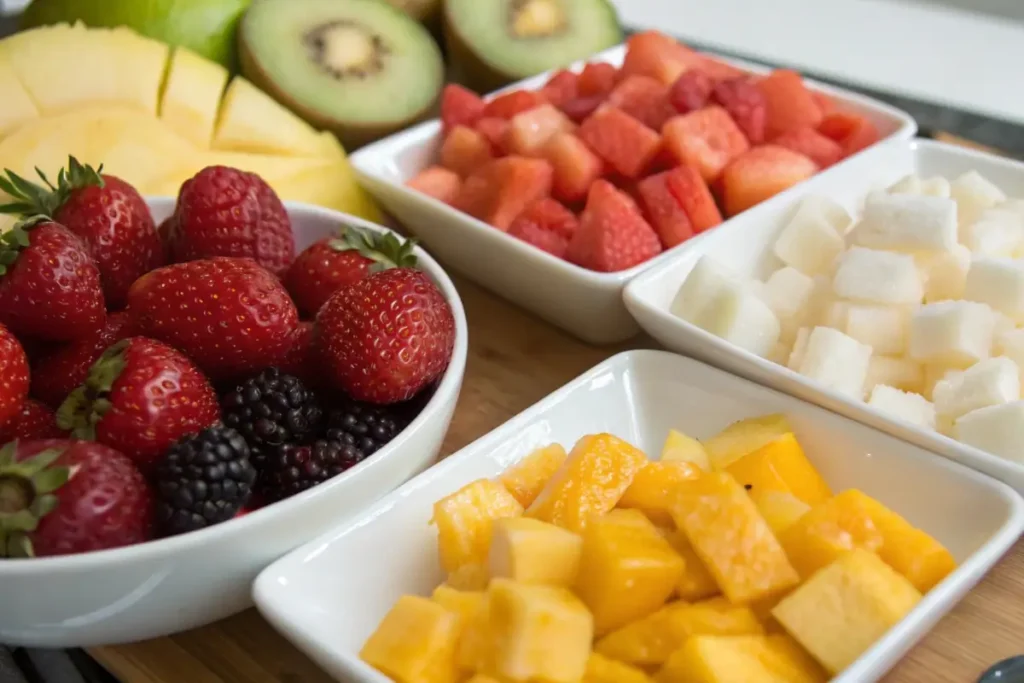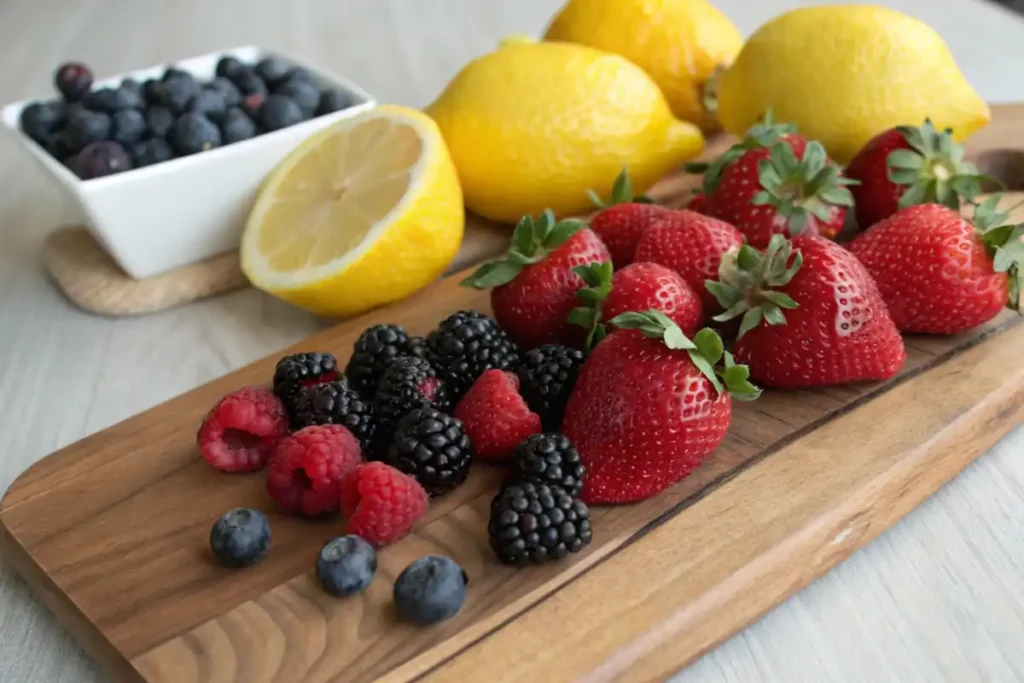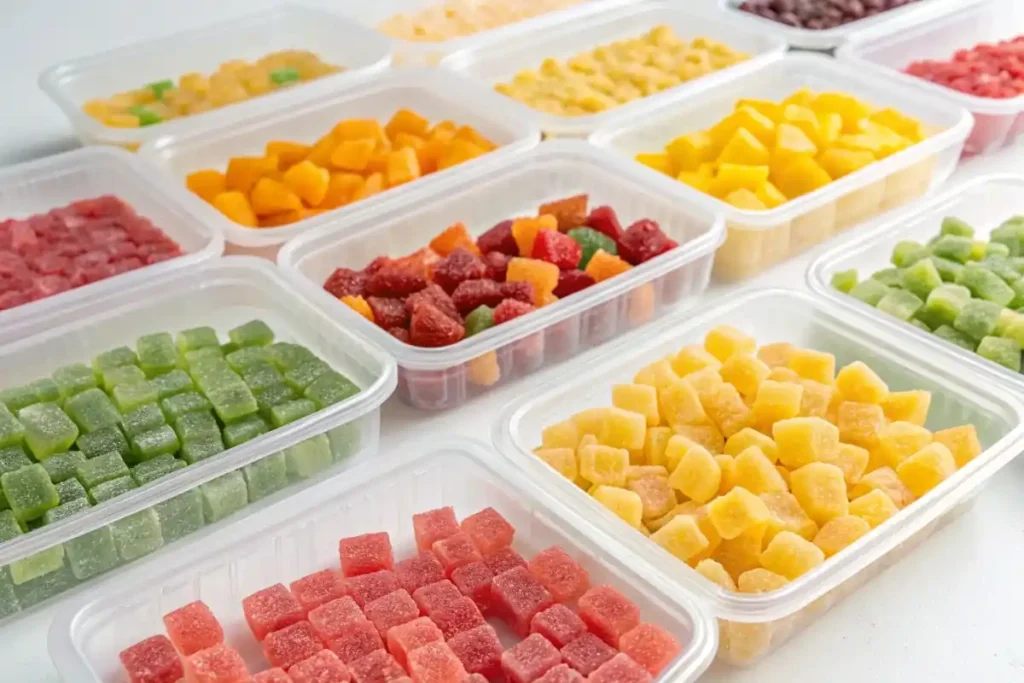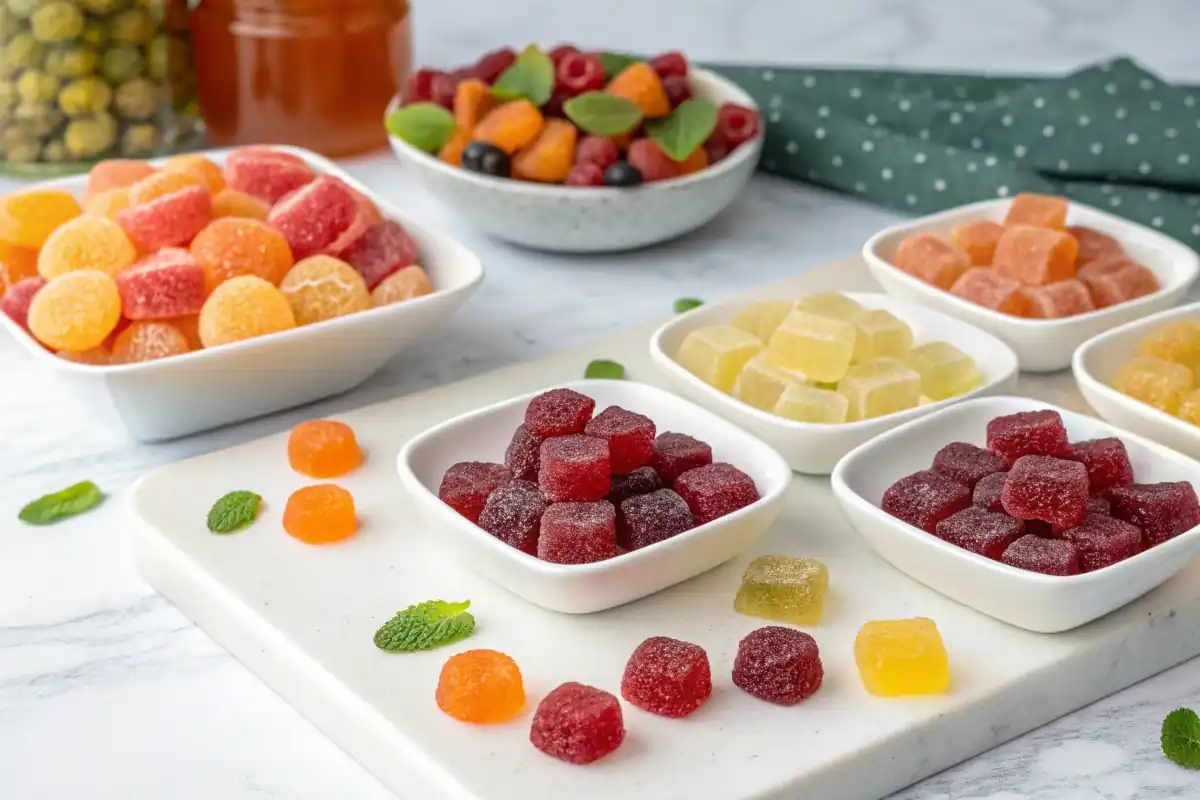Enjoy these easy and tasty steps to create homemade fruit snacks naturally. Learn tips, ingredients, and storage methods to craft perfect bites.
Table of Contents
Introduction
Making your own fruit snacks at home can be a fun and rewarding project. These treats, prepared naturally, allow you to control flavors, textures, and nutritional content. Because you avoid artificial additives, you will also discover new ways to enjoy fresh fruit. Altogether, this guide offers practical tips and ideas to help you create delicious, chewy snacks that suit your preferences. Eventually, you can even adjust sweetness levels and customize flavors to match any dietary need.
Understanding Homemade Fruit Snacks Naturally
Knowing what goes into your treats is crucial. By creating your snacks naturally, you eliminate many processed sugars and preservatives. Consequently, you can savor a fresher, healthier bite each time.
The Benefits of Homemade Fruit Snacks
Homemade fruit snacks provide many perks. First, they let you decide which ingredients to add. This approach limits unwanted chemicals and fosters a more wholesome experience. Moreover, making fruit snacks at home can be cheaper than buying expensive store-bought brands. This is particularly true if you already have fruits in season or on sale.
Another advantage is the versatility. You can mix different fruits or concentrate on one main flavor. Undoubtedly, children often love gummies. Thus, you can involve them in the creative process. In addition, homemade snacks present an excellent way to use leftover fruit that might otherwise spoil.
Finally, controlling the sugar content is a definite plus. You can use a mild sweetener, such as honey, or skip sweeteners altogether. Comparatively, commercial fruit snacks tend to be high in refined sugars. Accordingly, homemade options stand out as more health-friendly.
The Basic Ingredients
Fruit snacks usually consist of three main elements. One is the fruit puree, which can range from strawberries to tropical mangoes. Second is a gelling agent, like gelatin or agar-agar. Third is a sweetener, for instance honey or maple syrup.
Basic ingredients will also vary based on personal taste. For example, you can pick citrus fruits for a tangy kick. Conversely, you might go for sweeter fruits like peaches or bananas. You may also add lemon juice for acidity and to balance flavors.
In some recipes, extra flavors or even herbs such as mint might be used. Be sure to add these carefully. Indeed, a little bit of herb can highlight fruit flavors, but too much might overpower them. Initially, start with small amounts and adjust as you see fit.
Step-by-Step Guide to Making Fruit Snacks Naturally
This section walks you through a simple process. Meanwhile, remember to keep each step short and straightforward. Because each phase is vital, follow them in order for best results.
Preparing the Fruits Naturally

Begin by thoroughly washing your chosen fruit under running water. This practice is necessary to remove dirt and pesticides. Then, peel and cut the fruit into uniform chunks. If you work with berries or grapes, a simple rinse might suffice.
Place your prepared fruit into a blender or food processor. Another option is mashing softer fruits by hand with a fork. However, a smooth puree ensures consistency in your final gummies. Consequently, lumps can cause uneven texture or lumps in your snacks.
For best results, pick fruit that is already ripe and sweet. In a natural manner, ripe fruit contains more natural sugars. Hence, you can reduce extra sweeteners. Especially for those watching sugar intake, selecting fruit at its peak ensures a tastier, naturally sweet result.
Creating the Base Mixture Naturally
After preparing the puree, set it aside in a mixing bowl. Add your chosen sweetener if you desire more sweetness. Equally, some fruits like grapes or pineapples can be sweet enough on their own. Furthermore, consider adding a splash of lemon juice for a fresh burst of flavor.
Next, mix in your preferred gelling agent. Gelatin powder is a common choice, yet you can switch to vegan alternatives. Agar-agar or pectin can also give that fun chewiness. Initially, follow package directions for proper ratios. Generally, one tablespoon of gelatin is enough for about one cup of puree.
Gradually stir in the gelling agent to avoid lumps. If you add it all at once, you risk clumping. Basically, a well-combined mix leads to smoother gummies. When everything is thoroughly incorporated, your base mixture is ready to be heated.
Cooking and Thickening
Pour the fruit mixture into a saucepan set over low to medium heat. Carefully stir the mixture to prevent scorching. Comparatively, using a double boiler can be safer, but it is not mandatory.
Heat the mixture until it begins to simmer gently. Do not let it boil aggressively. Eventually, the gelling agent will dissolve, and the puree will thicken. Moreover, you may notice a glossy shine forming on the surface. That signals that the mix is almost ready.
Continue stirring for another minute or two. Afterward, turn off the heat. Let the mixture cool slightly before moving on. Nonetheless, do not wait too long. If the mixture cools too much, it might start to set prematurely.
Setting and Cutting
Carefully pour the cooked puree into molds or onto a lined baking sheet. You can use silicone molds for fun shapes. Alternatively, a small tray lined with parchment paper works well.
Spread the mixture evenly so it forms a uniform layer. Subsequently, place the tray in the refrigerator for at least two hours. Altogether, the exact setting time depends on the thickness of your layer and the type of gelling agent used.
Once set, gently remove the fruit snacks from the molds. If you used a sheet, cut them into squares or fun shapes with a cookie cutter. Chiefly, store them in an airtight container to keep them fresh. At this point, you can enjoy your homemade fruit snacks naturally.
Flavors and Variations
Homemade fruit snacks invite countless possibilities. Accordingly, exploring different flavor profiles adds excitement to the experience.

Classic Strawberry
Strawberry remains a favorite due to its vibrant color and flavor. Blend fresh berries and a bit of lemon juice for extra zing. Strain out seeds if you prefer a smoother texture. Finally, taste the mixture to see if you need sweetener. Many ripe strawberries are sweet enough on their own.
Tropical Mango
If you love warm, sunny flavors, pick mango. Mango puree is often naturally sweet and thick. Consequently, it may require less sweetener. A pinch of chili powder can also highlight the mango’s inherent sweetness, especially if you appreciate a slight kick.
Zesty Lemon
For a tangy profile, use fresh lemon juice combined with a bit of sweetener. Add grated lemon zest for added aroma. Comparatively, this version might be more acidic. Therefore, balance it with extra fruit puree, like apples or pears, to mellow the flavor.
Berry Blend
Mix blackberries, blueberries, and raspberries for a darker color and layered taste. This combination is rich in antioxidants. Equally, it produces a bold flavor, especially when paired with a little honey. Strain the seeds if you dislike the gritty texture.
Healthy Add-Ons and Alternatives
There are many ways to modify your fruit snacks. Particularly, you can replace traditional sugars and gelatin with more wholesome options.
Natural Sweeteners
Honey, maple syrup, or date syrup can sweeten your snacks without refined sugar. Basically, they offer a gentler sweetness profile. However, keep in mind that honey is not vegan. If you follow a vegan diet, opt for maple or date syrup instead.
You can also skip sweeteners altogether. Some fruits, like ripe bananas or peaches, taste great on their own. Furthermore, applesauce can enhance consistency while adding natural sweetness. Indeed, experiment to find what works best for your taste.
Vegan and Gelatin-Free Options Naturally
Agar-agar is a popular alternative derived from seaweed. It provides a similar firm texture to gelatin when used correctly. To use agar-agar, mix it with liquid and simmer until it dissolves. Then, incorporate it into your fruit puree. Because agar-agar sets at room temperature, your snacks may firm up faster than gelatin-based ones.
Pectin is another choice. Chiefly found in fruits like apples and citrus, pectin works well with acidic recipes. Accordingly, recipes that rely on apple juice or citrus juices can see great results. Simply follow packaging guidelines for ratios and cooking times.
In a natural manner, these vegan options preserve flavor and texture. Naturally speaking, they also cater to dietary restrictions. Thus, everyone can enjoy homemade fruit snacks with ease.
Storing and Preserving Fruit Snacks
Proper storage ensures your treats remain fresh for as long as possible. Generally, these snacks can last up to two weeks when stored carefully. Nonetheless, always check for signs of spoilage.

Best Practices for Extended Shelf Life
Place your fruit snacks in airtight containers or resealable plastic bags. Particularly if you live in a humid climate, consider adding a small packet of silica gel to absorb moisture. Alternatively, store them in the refrigerator for a longer shelf life.
Make sure to separate layers of snacks with parchment paper. Otherwise, they might stick together. In addition, keep them away from direct sunlight to maintain optimal taste and color.
Avoiding Common Mistakes
One common mistake is storing your fruit snacks while they are still warm or damp. This can encourage mold growth. Thus, let them dry on a tray for a few minutes before transferring them. Equally, keep an eye on temperature. Warm environments may cause your snacks to become too soft or sticky.
If you detect any off smells or changes in color, discard the entire batch. Sometimes, moisture can accumulate if containers are not fully sealed. Comparatively, store-bought snacks often use preservatives to mitigate spoilage. Consequently, homemade versions rely on meticulous storage.
Serving Suggestions Naturally
Homemade fruit snacks can transform ordinary occasions into special events. Naturally, you can serve them in creative ways.
Decorating Your Homemade Fruit Snacks
Dusting the snacks with powdered sugar or cornstarch can reduce stickiness. However, do not overdo it. Additionally, you can dip half the gummy in melted chocolate for a fancier look. Basically, these small touches elevate their presentation.
For themed celebrations, shape your gummies into stars, hearts, or letters. You can even decorate them with edible glitter. Conversely, keep them plain for a simple, rustic look. Because they are easy to customize, you can align them with any special occasion.
Party Ideas for Kids and Adults
Homemade fruit snacks naturally appeal to children’s love for sweet treats. Fill small party bags for birthdays. Meanwhile, for adult gatherings, arrange them on a dessert platter alongside cheeses and nuts. Comparatively, fruit snacks can complement savory dishes, especially if you choose tangy or spicy flavor profiles.
Additionally, consider pairing them with a fruit dip for an extra layer of indulgence. Children especially enjoy interactive party snacks. Therefore, create a snack station where guests can pick their favorite flavors, shapes, or toppings. Indeed, the options are endless.
Conclusion
Making your own fruit snacks naturally can be both simple and fun. You control the ingredients, which allows you to limit sugars and boost nutrition. Undoubtedly, the steps are straightforward: choose ripe fruit, add the proper gelling agent, and carefully cook the mixture. Afterward, experiment with flavors, sweeteners, and decorations until you find your perfect match. Finally, remember to store them properly so they stay fresh and ready to enjoy any time.
Frequently Asked Questions
How to make fruit snacks at home?
To make fruit snacks at home, start by blending fresh fruit into a puree. Heat the mixture with a gelling agent such as gelatin, agar-agar, or pectin. Stir until it thickens, then pour into molds. Chill for about two hours or until set. Cut into shapes and store in an airtight container.
What are the ingredients in fruit snacks?
Common ingredients include pureed fruit, a gelling agent, and a sweetener. You can also add lemon juice for flavor balance. Some recipes incorporate natural sweeteners like honey or maple syrup. Others might use herbs or spices for a unique twist.
How to make your own fruit sweets?
Begin by choosing fruit that aligns with your taste. Blend or mash it into a smooth texture. Add a little sweetener if you prefer. Then, mix in gelatin or a vegan alternative like agar-agar. Heat the blend until it begins to thicken. Once cooled, mold the mixture and allow it to set in the refrigerator.
How to preserve homemade fruit snacks?
Proper storage is crucial. Keep them in airtight containers or resealable bags. Separate layers with parchment paper. Store them in a cool, dry place or in the refrigerator for a longer shelf life. Check regularly for any signs of mold or spoilage.
Suggested Internal Links
- https://iamarecipes.com/cinnamon-rolls-cheesecake-recipe/
- https://iamarecipes.com/why-did-my-coconut-cream-pie-not-set-up/
- https://iamarecipes.com/how-to-caramelize-brulee-perfect-creme-brulee-every-time/
- https://iamarecipes.com/whats-the-difference-between-creme-brulee-and-custard/

